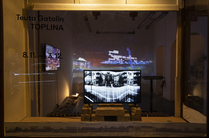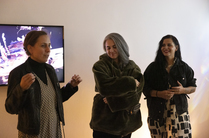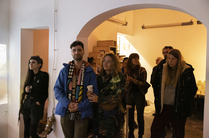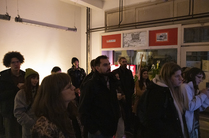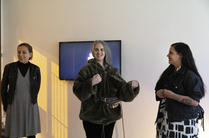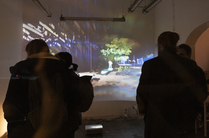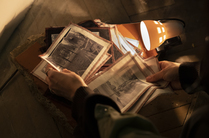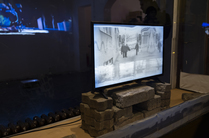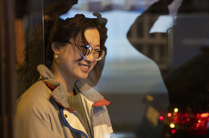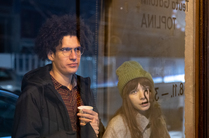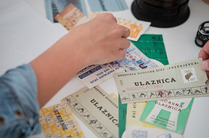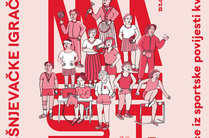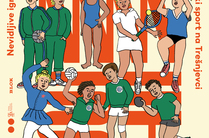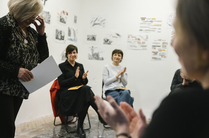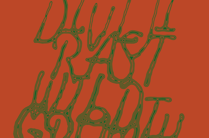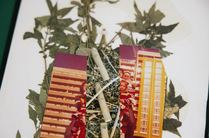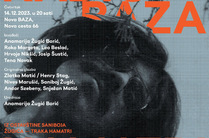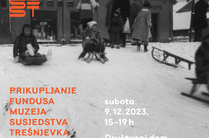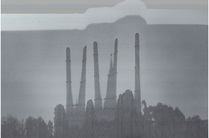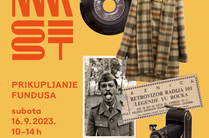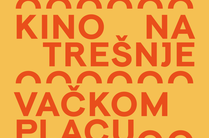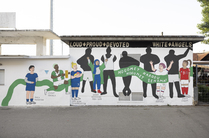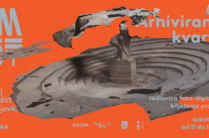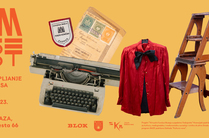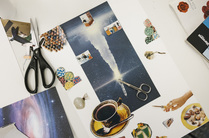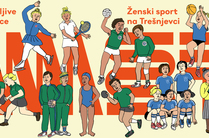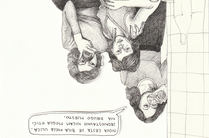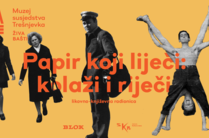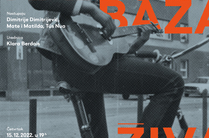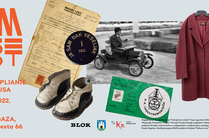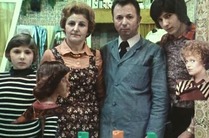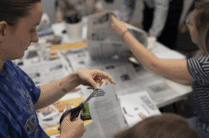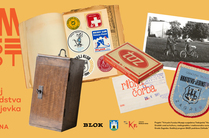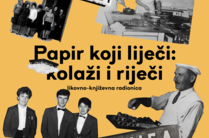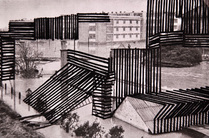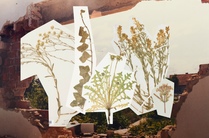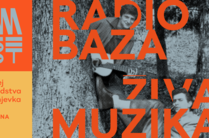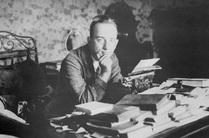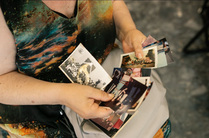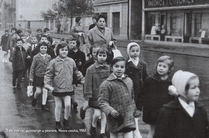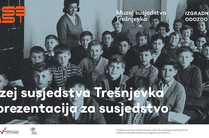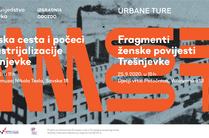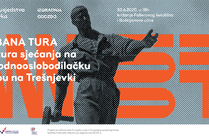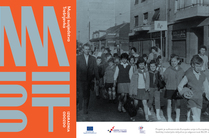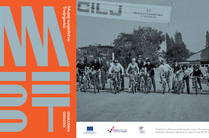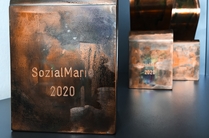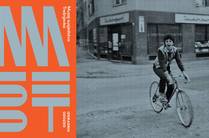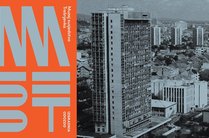EXHIBITION "WARMTH" BY TEUTA GATOLIN
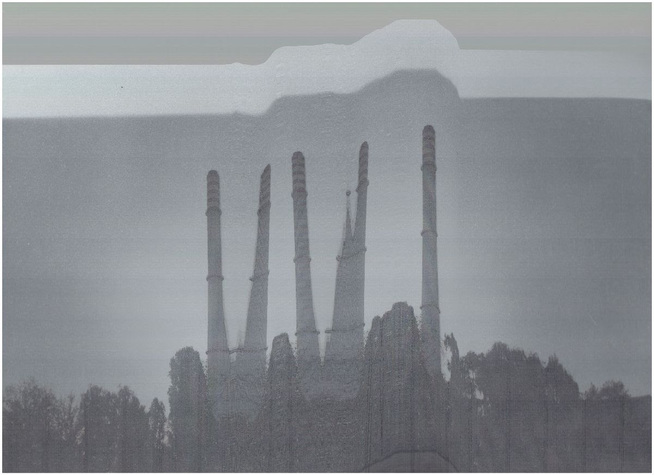
TEUTA GATOLIN
WARMTH
8 Nov — 2 Dec 2023
open: Tuesday – Saturday, 4 – 8 PM
Nova BAZA, Nova cesta 66
With its 200-meter-high chimney, the Heating Plant (Toplana), is one of the highest structures in Croatia, and, due to its height, visible from different spots in Zagreb. Its red and white striped chimney, built in 1980, looks like a gigantic signpost, indicating that the neighborhood of Trešnjevka is close by. The Heating Plant, located on the intersection of Magazinska and Zagorska streets, is considered a successor of the City Power Plant, also known as “Munjara”, which started operating in 1907. Its purpose was to supply large industrial plants and households with electricity. Close to this facility, there were numerous factories, such as Frank, Končar, Zagrebačka Pivovara, Pliva, and the Dom Sportova sports arena built in the 1960s. Due to its multifunctionality, Dom Sportova has been the ultimate meeting point and gathering spot, not only of Trešnjevka’s residents, but also of all those who visit its halls to enjoy sports or music. This space has been in the center of the artistic research project “Warmth” (“Toplina”), conceived by Teuta Gatolin.
With the purpose of studying the aforesaid micro-location, the artist started the process of Trešnjevka archiving by using the techniques of photogrammetry and stop motion animation, looking at the public space of her neighborhood as a living organism, continuously changing due to social and economic processes. Photogrammetry is a technique that is as old as the medium of photography, and it is used for determining the shape, size, or a position of a given object by taking photographs, measuring, and interpreting them. Relying on geometrical and optical properties of a photograph, it is possible to partially or fully reconstruct the photographed object, by using the technology of photogrammetry. Due to its broad range of applications, photogrammetry is used across disciplines such as geodesy, engineering, urban planning, archeology, geology, geography, but also for military purposes, in criminology, architecture, and monument protection.
However, the technique itself does not imply expensive professional equipment, and Teuta Gatolin used mostly her own smartphone camera for the purposes of her artistic research. To apply this technique, it is necessary to take as many photographs of an object as possible, which are then turned into a three-dimensional digital model via software processing. By using various software programs (Meshroom, Blender, Unity), the artists created virtual space with a specific aesthetic of a landscape that refers to the real space around Trešnjevka's Dom Sportova. 3D models thus created have been placed approximately in the same space where they can be found in reality, in order to enable moving through the virtual space, creating a game of recognizing the most prominent symbols of Trešnjevka. Teuta Gatolin’s virtual world shows the complete urban inventory of Trešnjevka; therefore, when it comes to marking public space, an ordinary bench is no less valuable than the “The Bathing Woman” Fountain by Lujo Lozica, seeing that both examples are fragments of Trešnjevka’s urban fabric. The long process of neighborhood archiving is not technically demanding, but it is slow and repetitive, and demands a high level of patience and devotion, as well as time.
Besides the above-mentioned photogrammetry technique, the artist used the stop motion animation method of archiving, and in the exhibition “Warmth”; she presented short animated films that were created as a result of her artistic approach to documenting the neighborhood. The walks around the space surrounding Dom Sportova started spontaneously in 2017, and something that had began as intuitive photographing of one’s own environment, turned into a continuous artistic project. In order to create animated films, the artist took one photo for each step she took. This resulted in a heap of photographs, which the artist then printed in color on A4 size paper. Thus printed photographs constituted a film sequence, which reminds of an analog film tape. The artist then used the surface of a scanner in order to achieve interesting visual effects. Manipulations of the scanner resulted in distorted photographed scenes, making it more difficult to clearly recognize Trešnjevka’s urban landscape. In addition, the artist printed selected photographs on thermo foil, and, by using an iron, achieved transfer of photographed scenes onto fabric, in order to add a tactile component to the objects.
The artistic research project ”Warmth” relies on theoretical concepts of Hauntology of Space by Mark Fisher, who points out the importance of multiple layering of the past, the present, and the future. In his essay “What Is Hauntology?” the author explains that one of the fundamental features of the 21st century, that is, of the digital time we live in, is the lack of capacity to conceive a world radically different from the one in which we currently live. This is why memory of some other times awakens the sense of nostalgia in us, even if we didn’t directly witness certain historical eras, but we rather know them through other people’s stories and experiences.
Teuta Gatolin is continuously searching for remnants of the past that shape the present, but with a potential to become a part of the future. Therefore, she does not perceive Trešnjevka exclusively through the lens of the present moment, but instead reads it as a compound of historical layers, which have partially or completely disappeared with time. Perhaps in the neighborhood there are no more wild cherries (trešnje), the tree Trešnjevka is named after, and the architecture of residential buildings reflects the spirit of another time and life that do not exist any more. Still, Teuta Gatolin’s artistic practice shows that in the virtual world everything is possible, and the spectator will notice segments of Trešnjevka’s public space from different periods, which, somewhat surprisingly, create a harmonious unit in the (digital) space.
In the same way layering of different periods characterizes a thematic approach to her artistic project, so does the choice of techniques shows the artist’s sensibility for interconnecting the past, the present, and the future. In Croatia, photogrammetry has had a long tradition, but stop motion animation has seen a more extensive use in the local context only in the past 10 years. By combining different techniques, but also by evoking different senses, the artist created a space in which audio and visual elements of the exhibition communicate with the tactile ones. Thus the visitor is immersed into virtual reality, but the tactile component of the objects brings them back into the present moment. Teuta Gatolin’s artistic practice confirms the value of individual memory, and transfer of knowledge on techniques of archiving the neighborhood becomes one of the ways to preserve the memory of the neighborhood. Photography has become a widely accessible medium, thanks to the development of technology, which is why we have to come to often observe the world around us through the lens of our smartphone camera. This is why Teuta Gatolin’s approach may serve as an inspiration for observing one’s surroundings. By putting in a little effort, it is possible to record parts of urban space, because maybe your favorite bench will be the one to disappear from your neighborhood, during the next urban inventory change.
Tena Starčević
visual: Teuta Gatolin
curators: Ana Kutleša and Tena Starčević
Some of the images used in the exhibition were created during the workshops "Archiving the Neighboorhood" with the participation of Nikolina Butorac, Iva Raič Stojanović, Larisa Šmitran, Tomislav Paviša, Vanja Krajnović, Klara Berdais, Erol Beširević, Iva Korenčić, Sara Gurdulić, Matko Vlahović
The exhibition is part of the “Trešnjevka neighborhood museum – living heritage” project, and it is financially supported by the Ministry of culture and media of the Republic of Croatia and the City of Zagreb, The city office for culture and civil society. Baza’s annual program is supported by the "Kultura nova" foundation.
